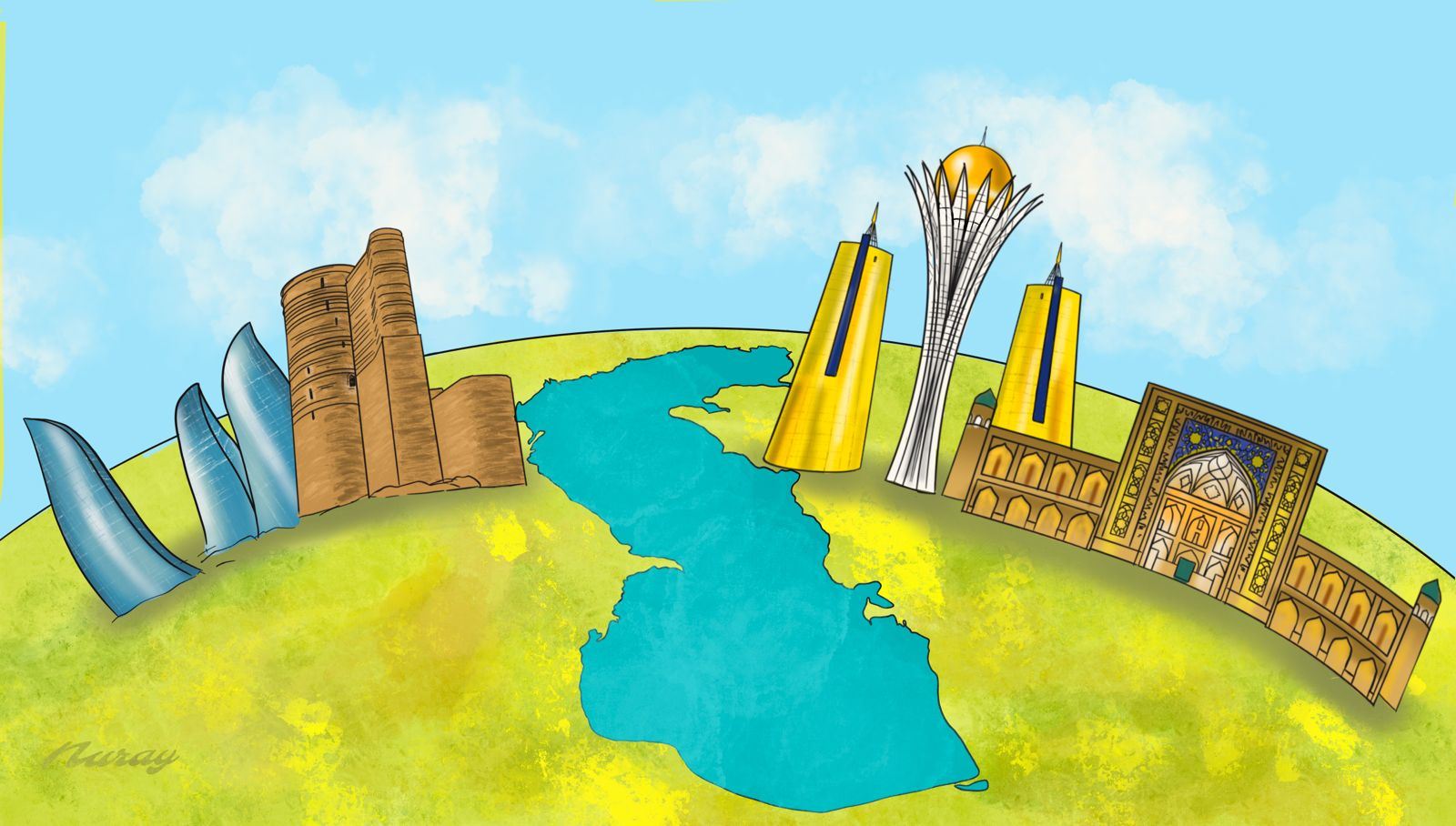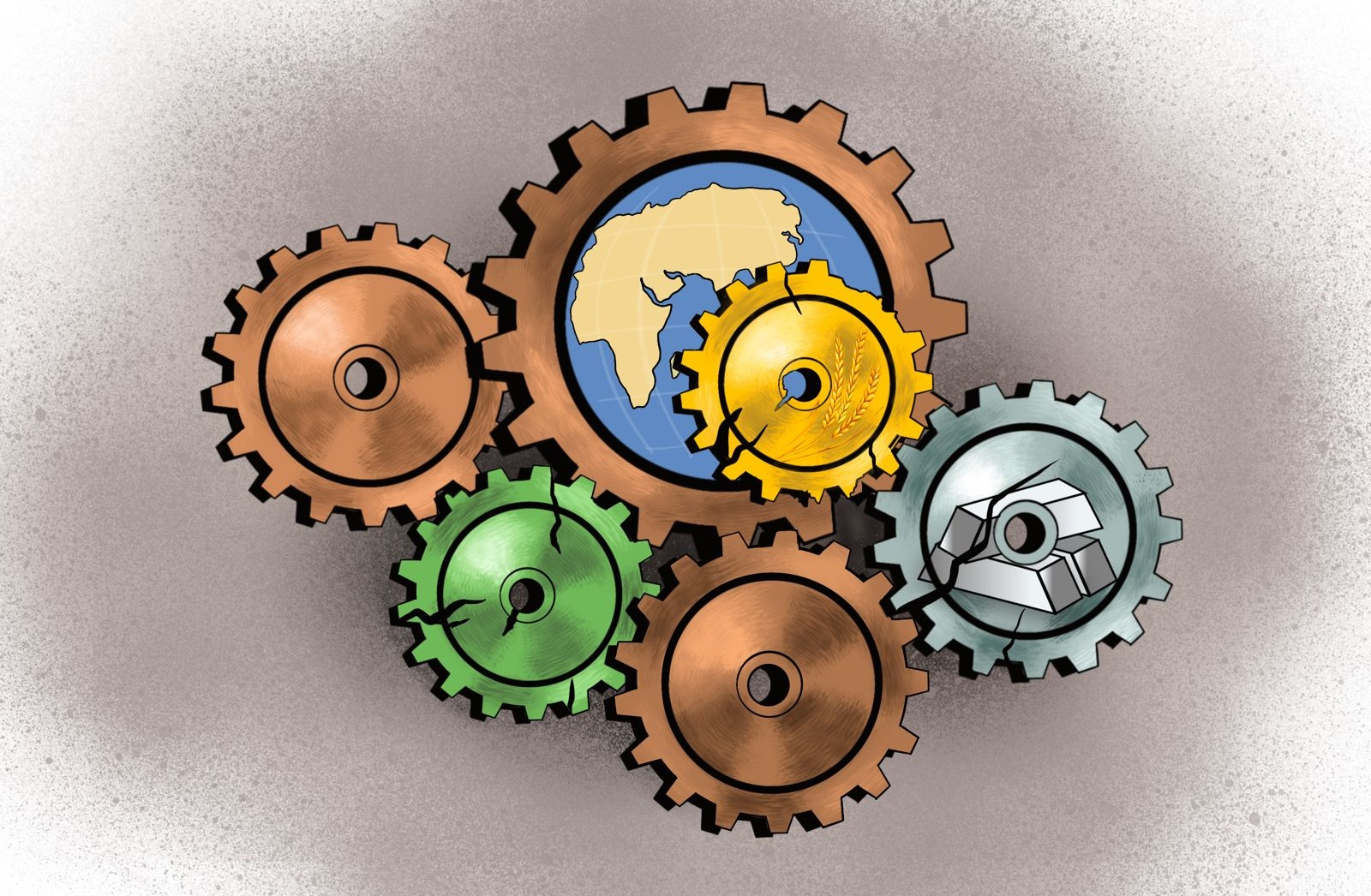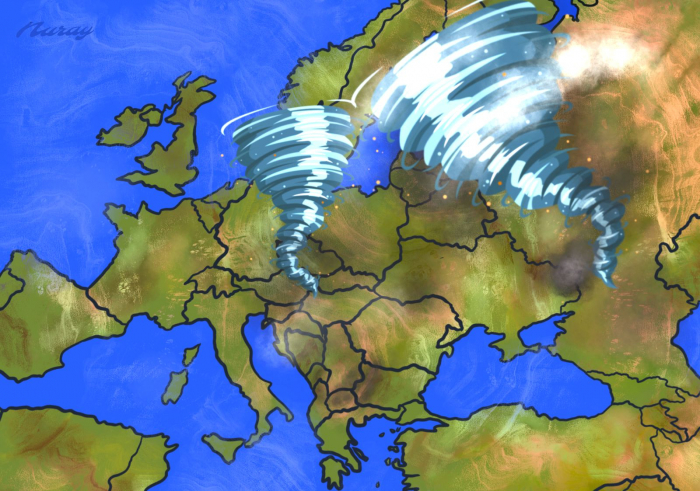-1680010126.jpg)
| The Analytical Group of AzVision.az |
The ‘Four Shore’ Project | Long Read// Can Turkmenistan join the ‘green energy corridor’? |
|
O
n 17 December 2022 Azerbaijan, Georgia, Romania, and Hungary signed a
historic document in Bucharest. The agreement on strategic partnership on
developing and transmitting green energy envisages constructing an electric
cable from Azerbaijan to Europe through the bottom of the Black Sea. One nuance
is worth mentioning – it covers transferring green electricity only, in other
words, energy from renewable sources. ‘This is an ambitious project. It will connect us to the Caspian region
both for digital communication and energy. It will help us strengthen supply
security through delivering electricity from renewable sources to the European
Union via Romania and Hungary,’ Ursula von der Leyen, President of the
European Commission, had said at the ceremony. This was a completely new role for Azerbaijan, traditionally a
producer of carbohydrates. On the one hand, the country is gradually upping
its natural gas supply to the European market. On the other, it is joining a
new energy corridor nonetheless, a green electricity line at that. So why ‘green’?
Azerbaijan’s renewable energy potential is 27 gigawatts on land and
157 offshore. 4 gigawatts of this potential will have been realized by
2027, 80% of which will be exported. The number will gradually grow to
25 quite soon. |
||
-1680010296.jpg) |
||
| …This was the beginning of a new role, a new mission, a new ear for Azerbaijan… |
But whenever one talks about installing a cable to Europe from the
Caspian coast, the following alluring idea pops into mind: Why from one
Caspian shore only? After all, the other side of the Caspian has a huge potential for developing green energy! If so, can Turkmenistan also join the
four countries to build a green energy corridor? This is a very interesting question, albeit without an unequivocal
answer yet. Land of Sun and Wind
Turkmenistan is 5.6 times as big as Azerbaijan, with 70% of
its territories covered in deserts, which means the land is unsuitable for
agriculture, but perfect for producing solar energy. There are over 300
sunny days in the country. Plus, being located on the Caspian Sea coast
automatically translates into wind energy potential. At the same time, the
country has been somewhat delaying the realization of the potential. Therefore,
there is no accurate assessment of the potential yet. The future will paint a
clearer picture of its capacity. |
|
-1680010413.jpg) |
||
| Turkmenistan’s green energy potential has not been accurately assessed yet |
Turkmenistan has vast gas reserves, but a small population. The
country with a population of just 6 million fully meets its own energy needs
with gas production and exports. Converting gas to electricity costs them 3 times
cheaper than producing alternative energy, which is why it does not look
that much enthusiastic about developing green energy, which is more
difficult and costly. Moreover, the country has not joined the Paris Agreement on zero
carbon footprint by 2050 (whereas Azerbaijan signed the document in 2016).
In other words, there is not all that much political interest in developing
alternative energy.
That being said, Ramil Huseyn, Deputy Executive Director of the
Centre for Analysis of Economic Reforms and Communication (CAERC), says that it is time for
Turkmenistan to shape a vision to develop green energy. |
|
| Ramil Huseyn: ‘Turkmenistan should pursue a policy of rapprochement, not self-isolation’ |
Besides the ecological and economic aspects, developing green energy
will also yield social benefits. The field employs around 13 million people at
the moment and according to forecasts, alternative energy will produce a lot of
jobs in the future. Turkmenistan could thus solve the employment problem as
well. But this also raises the issue of accessing energy markets, because we
will be left facing the question of ‘having investments, but no possibility to
sell the produced energy’. The East does not sound at all promising: China is
already the biggest investor in alternative energy. Both China and South Korea
are implementing mega projects in this direction. Kazakhstan, Uzbekistan, Russia,
Iran, and Afghanistan do not seem like potential buyers of green electricity.
What is left is the European market, which is always in need of energy and
willing to pay. What are the chances of Turkmenistan getting access there? Technical and Political Issues
The first step to access the European market would be to install an
electric cable from Turkmenistan to Azerbaijan through the bottom of the
Caspian Sea. The project will face no technical problems. Ilham Shaban,
Director of the Oil Research Centre, reminds that the first ever
telegraph line in history was installed between the Krasnovodsk and Baku ports
in 1902 in the times of Tsarist Russia. Such lines were built under lakes
only in Europe and America at the time. We were the centre of a project of such
magnitude back in the early 20th century. |
|
| Ilham Shaban: ‘Installing a cable through the bottom of the Caspian Sea is realistic in all respects’ |
Even if Turkmenistan does not export green energy to Europe, building
the Trans Caspian cable would be extremely fruitful. It would integrate the
electrical infrastructures on the left and right coasts of the Caspian Sea,
ridding us of the necessity to produce electricity from gas. So, even if Turkmenistan does not develop green energy, it can still
convert gas into electricity and sell it to Azerbaijan. This would be a giant
step towards improving Azerbaijan's ecology and reducing its carbon footprint. Some experts fear the project may stumble upon political obstacles,
just as the Trans Caspian gas pipeline project fell through due to
objections by Russia and Iran. The 12 August 2018 Convention on the
legal status of the Caspian Sea includes a special clause on installing mains (oil,
gas, and water) between the right and left coasts, which reads that all
Caspian littoral countries must sign off on such undertakings because of
possible ecological problems. But there is nothing on cables, electricity,
and infrastructure necessary to transmit it. Firstly, it cannot cause any
environment-related problems. Secondly, we mentioned that a cable had
already been installed through the bottom of the Caspian Sea in the early
20th century and it has been updated several times since. The
Aktau-Baku fibre optical communication line is under construction at this very
moment. So, What’s the Problem?
Professor Chingiz Ismayilov, Ph.D. in geography, head of the Economy
and Social Geography Department at Baku State University says that Russia and Iran
will try to cause political obstacles even without any legal objections. Since
Turkmenistan does not wish to face these countries, it will not actively
take the initiative, even if interested in the project. |
|
| Chingiz Ismayilov: ‘Turkmenistan will not put forward initiative however much interested they may be in the project’ |
As for the part of the cable passing through the bottom of the Black
Sea, it will face more technical problems compared to the Caspian, because the
environment in the Black Sea below 80 metres is rather aggressive. The
cable requires special coatings to prevent corrosion, which of course boosts
costs. The initial estimates say the project will require an investment of 2
billion euros. But European investors are interested in it and Western
companies already have great experience in installing underwater cables.
Therefore, there are no foreseeable problems with the Western part of the
project. The Orient is an Enigma
Despite all obstacles, Turkmenistan has already broken the green
energy ice. They are creating an
artificial lake, the Altyn Asyr (Golden Age), at the intersection of
Balanabad and Tashauz provinces in Northern Turkmenistan, to the east of the
Garabogaz Lake. They will complete filling the lake by 2025. Besides collecting
drainage water, they are also developing green energy projects on the site.
They envisage collecting solar and wind energy into electricity. |
|
-1680010487.jpg) |
||
| Installing a cable through the bottom of the Caspian Sea is easier compared to the Black Sea |
In any case, Turkmenistan may want to benefit from Azerbaijan’s experience in the future. Some 5 years ago, there were not even talks that Azerbaijan would ever export green energy to Europe. UAE’s Masdar Clean Energy, which invested in Azerbaijan, will now produce green energy in Turkmenistan. This means the same company is now investing in both Azerbaijan and Turkmenistan in green energy. This can bring our cooperation even closer. Turkmenistan currently has an observer status in the Organization of
Turkic States. As the country becomes a full-fledged member and deepens
cooperation with the organization, it will also have an impact on the
development of green energy, because it is a part of the OTS 2040 Vision
concept.
The green energy corridor introduces great opportunities for
Turkmenistan through connecting the entire Caspian region to Europe. Turkmenistan
will thus achieve something it has never been able to do – get direct access to
the European energy market. They will be taking a giant leap towards the future
of energy and getting a chance to develop relations with Europe. All of these
are realistic goals. All that remains is to demonstrate will. |
|










-1728294271.jpg)
















